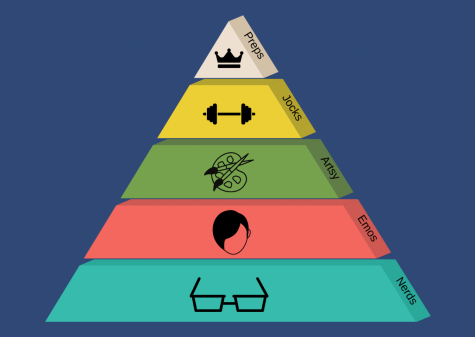Social interactions and cliques
June 14, 2021

Ganeshananthan started in the High School in fall 2018 and said one key difference he quickly realized was that ASL has a smaller population size than his previous schools. Ganeshananthan said he worked as a house principal at New Rochelle High School in New York, which has a student population of 3,485. In comparison, the High School has a student population of 491.
Ganeshananthan said despite the student body being divided into houses at New Rochelle, these groups remained relatively large, whereas at ASL, the smaller population facilitates closer bonds between students and their teachers. He said his house contained 700 to 800 students – around a quarter of the student body.
“Even that size, you’re still not able to really get to know everyone in a close fashion that you can when there are only 120 kids here in each grade,” he said.
While teaching in public schools, Densley said she often taught far more students. She said while it made it unlikely for her to get to know everyone, it allows students to have anonymity when there are conflicts within social circles.
On the other hand, Densley said news spreads quickly at ASL, which holds students to higher expectations and as a result, induces a certain amount of stress.
“Because everything is so connected, when anything happens, everybody knows about it and it can create a lot of pressure,” she said. “That doesn’t exist in the same way at the public schools.”
Hartogs said cliques are prevalent in the school, thus making it challenging for students to branch out.
“People don’t really want to move around, and they stay in their own group because they feel safe that way,” he said. “A lot of these people in ASL have been nurtured in a way that they stick to what they got and they don’t really try to explore other things.”
Additionally, Yousey said socioeconomic status can further impact social interactions and relationships throughout the entire school community.
“Some students naturally hang out together and include each other because they’re from the same level of class, and they can afford to do the same kinds of things,” she said. “If your child’s in elementary, then they connect because their parents or nannies connect during pick up time, and they have friends that way, whereas parents who are working can’t make those connections.”
Regarding students’ interactions in society, Blanks said attending a well-funded private school such as ASL can hinder one from venturing outside the community. She previously attended Cairo American College and the American School in Dubai before moving to the School in Grade 6.

“The pros are obviously the resources, the education,” she said. “The quality of those things is just unmatched honestly,” she said. “The cons, though, is sometimes being so— because it’s an American school in London and it’s a private school, you kind of get closed off from the rest of the world.”
Moreover, Densley said surrounding oneself with others who have different experiences is crucial for self-growth despite COVID-19 restrictions reducing the ability to branch out.
“It’s very easy to just stay in our little bubble of ASL, and I’m guilty of that myself, especially with the COVID pandemic and all of this – not being able to go out and meet people outside of our space,” she said. “But having the opportunity to do that really does expand your view in a lot of ways.”
However, Densley said in comparison to the previous communities she has worked in, the ASL community is generally more aware of the wider world.
“ASL does a better job of at least recognizing that ideas exist beyond the world you live in and beyond your perspective,” she said. “We could do a better job of being more accepting and inclusive, but I think we’re also working on that.”

